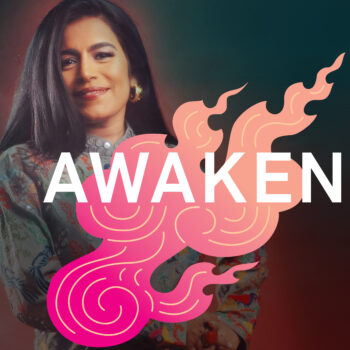
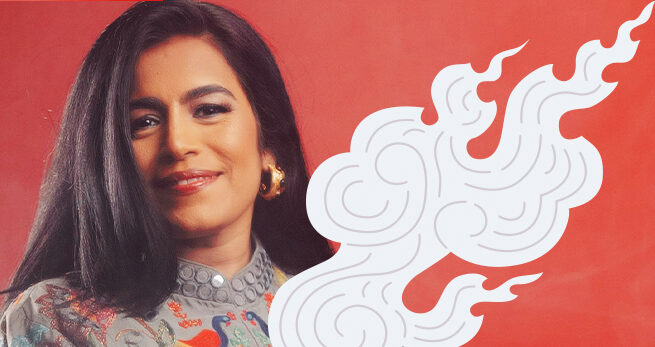
One thing is for certain: one day you will die. But what happens when you die? And how does knowledge of your inevitable death impact how you live now? In this episode, all the guests in the series reflect on these questions and consider how grappling with our mortality is part of what makes us human.
YONGEY MINGYUR RINPOCHE:
We are dying every day, but at the same time, we are reborn every day. So that in-between moment is the most precious moment in our life.
FALU:
Buddhist teacher and author Yongey Mingyur Rinpoche.
YONGEY MINGYUR RINPOCHE:
Because that moment is the possibility to transform, to change, to grow.
FALU:
Welcome to AWAKEN, a podcast from the Rubin Museum of Art about the dynamic path to enlightenment and what it means to “wake up.” I am singer and songwriter Falu. At the Rubin, a museum dedicated to art from the Himalayas, we believe art can nurture awakening. This season, we delve into the notion of life after—those big transitional moments that propel us into the unknown. We’ve gathered artists, writers, scientists, poets, Buddhist teachers, and others to explore key events and characteristics of a human life—from birth to death and everything in between—as well as grapple with the ultimate mystery: the afterlife.
Their stories offer insights on how to approach change with openness, even amid possible grief or joy, fear or excitement. And with art from the Rubin Museum as the connecting thread, we can make even better sense of those changes. Because art has the ability to wake us up to what is possible.
In this episode: Death. It can be a difficult topic to talk about, but it is one of the only certain things in our lives. We are all born, and we all die. We don’t know when, we don’t know how, and we don’t know what will happen right before, or right after. We only know one thing. We have this moment. This one, present moment is the only thing we can be sure we have.
In this episode, we are going to hear all the guests in the series reflect on what they think happens when we die, some will share their own experiences with death or near death and others will reflect on how the knowledge of the finiteness of life affects the way they live. As you hear their perspectives, check in with yourself to acknowledge or voice your own perspectives.
On some level, we all know we are going to die. It might seem too abstract to truly grasp, or too painful to accept, so we live in denial. But that also denies us of the opportunities that come with embracing the fact that our time here is fleeting. What if we could lean into this reality? How could acknowledging and accepting your future death impact how you live today?
Author Michelle Tea spoke about how having a child really changed her thoughts around death.
MICHELLE TEA:
Suddenly I have this impossible mandate to live forever. It’s awful.
It’s like, “Oh my god. This plane of existence is rough. Why bring a little innocent soul here, who is now going to have to survive capitalism? And like, climate change.” And like, “Oh my god,” You know? And I am still haunted by this every day. You know, it’s really weird. It feels spiritual, it feels chemical. But yeah, and it’s very tied to the fact that I won’t be here forever.
Your death is imminent, like you see it, it’s right over there, you know there’s no getting away from it, you can still—it’s almost like, “Well, you’re not dead right now. Right now you’re still right here.” And it’s sort of like this extreme presence. It is really hard knowing that I’m going to die, now that I have a child.
And also, I think that I’ll be okay, when it happens.
FALU:
Neuroscientist Dr. Lisa Miller.
LISA MILLER:
For me, it’s my perception that in death, there’s absolutely continuity of consciousness, a continuity of spirit. But I think in the same way that we are a point and we are a wave, there is a material reality and then there is—there’s both the point and the wave function.
FALU:
Author and Buddhist teacher, Sebene Selassie.
SEBENE SELASSIE:
My aspiration is to be present for and enjoy my life, because I have this direct experience that anything could happen at any moment.
Most recently, just about a month ago, I had sepsis. And it came on very suddenly, because of my immune system and various conditions in my body that I don’t need to go into. But it landed me in the hospital for five days.
And, that, if I hadn’t gotten to the hospital in the time that I did, who knows what could have happened. And so that constant, or let’s say continual, experience of coming closer to death than most of us usually do, that kind of continual facing of mortality, yes, invites me to really, really—enjoy life. That I have a very fortunate and beautiful life, filled with a lot of connection, and a lot of freedom and joy, and I hope to—-to remember that, as often as I can.
MARIE HOWE:
I’ve pretty much often been a noticer. I mean, I love the world.
FALU:
Poet Marie Howe.
MARIE HOWE:
I love the physical world. I love—like as so many people do. I love—the pencils here. I mean, just the yellow of the pencil—I mean, look at these. This has been with us forever, right? The—mwah!—the yellow pencil. I mean, it’s something we can hold onto, right, from first grade, you know. And I really am in love with the world.
And, it’s so painful to be alive. So painful. And so painful, and so beautiful, and so awful, and humans are so—we’re so deeply unstable, and confused, and we hurt each other so much, so terribly. So it’s all there, you know?
There was a cartoon in the New Yorker a few weeks ago. Maybe it was not the New Yorker, somewhere else, but two older people were sitting around having a coffee, and someone said, “I used to love drugs, sex, and rock and roll, and now I’m so excited when the chickadee comes to the bird feeder.” And I feel like that’s where a lot of us are at now, thank goodness.
Because it’s impossible to bear being alive and knowing we’re going to die at the same time. So, we feel along the wall for a portal to some—some way to live with it.
FALU:
Sometimes that portal can be art, or it can be music, or family, or something else. What’s your portal? What are your current views and understanding of what happens when we die? For neuroscientist Jill Bolte Taylor, that portal was given to her, the smallest keyhole with the brightest light, as you will hear in this story.
JILL BOLTE TAYLOR:
When I experienced a hemorrhage, a blood vessel burst inside, deep inside of my left hemisphere, it was going to be a slow seepage into the tissue. And the thing about cells, neurons, and blood, is that blood is poison to neurons. It kills them. It incapacitates them. It paralyzes them from being able to communicate in their circuits. And if it actually comes in direct contact with the neurons, they’ll die. So, it’s never a good thing when you have that kind of trauma. But, because I had low blood pressure, it slowly seeped out of that vessel into the tissue. And so over the course of four hours, I got to watch my brain kinda stop functioning circuit by circuit.
I gained paralysis on the right side of my body. I lost my language, so my brain was completely silent. I lost any fluidity of movement. So I just over this course of four hours got to watch the systems shut down. But in the absence of the dominance of the left cells over the cells in my right hemisphere, as the left cells were now swimming in a pool of blood, they released their inhibition over what was going on in my right hemisphere, and the right hemisphere cells, they were fine, and they were functioning, and they began to thrive. And the right hemisphere is the experience of the present moment. The primary difference, as I perceive, between these two hemispheres, is the right hemisphere is right here, right now. Right hemisphere; right here, right now.
I become in the consciousness of the cosmic flow, if you will. And, it feels like love. I mean, it just really feels beautiful. It’s peaceful. It is what it is. And without the judgment of the left hemisphere saying, “Yeah, but—I’m not okay,” or “Yeah, but—I can’t speak,” or “Yeah, but—I’m paralyzed,” in the absence of the left brain—worried about what has happened to me the individual—in the absence of that, my experience was just this peaceful euphoria.
FALU:
The consciousness of the cosmic flow. At the moment of the stroke, it seemed many of her functions died, but somehow a consciousness remained. And in that moment, she was in a type of middle space, in a liminal in-between space. Buddhist teacher and author, Yongey Mingyur Rinpoche.
YONGEY MINGYUR RINPOCHE:
So there’s three layers of the body. So right now, we are experiencing this gross body. When the gross body totally ended, so that’s what we call the bardo, which is connected with the death and dying—the big bardo. What happen normally—the process of death and dying is very similar as we go to sleep. So the process of sleeping and the process of the big—the dying is similar. So there’s a dissolution of elements, the energy level of those elements. So when we go to sleep, some people feels falling; the earth element a little bit dissolves. And like some people like floating, or melting; water element.
And then like shock, burning, or some kind of like energy; the fire. And then blown away. And then there’s almost dark, unconscious, and suddenly, there’s a very peaceful presence beyond concept. So that is our fundamental quality of the mind, the luminous mind, experience—a split of second, then become unconscious and sleep, fall into sleep normally. And that happen when we die. Very long kind of process, very clear and long process. And if you recognize that the final—the innate quality, the very clear gap is the—that’s the real bardo, the gap one, big gap.
FALU:
While Jill Bolte Taylor didn’t actually die, she had the sense of presence that comes with dying, as Yongey Mingyur Rinpoche describes it: a very peaceful presence beyond concept. In this moment, she was recognizing this within herself. Marie Howe speaks about what she experienced when she witnessed this in someone else, the death of a dear friend.
MARIE HOWE:
Our friend Billy. A whole gang of us loved Billy. He lived in Provincetown. He had AIDS for a long time.
And when he died, the moment he died, there were three of us in the room, and I thought—I thought everybody in the room felt this, so I don’t know what to say about that. But what happened was to me, and my experience was, his sister was crying and on his chest, his friend Janice was there. But what I felt was this extraordinary pouring into the room of molecular energy. I mean, like fwwwwwwww! I mean, huge energy, pouring out of his body, like joy. Joy. Ecstatic. Fshhhhhhhhhh! For minutes and minutes and minutes. And I kept thinking, “All this was in Billy?”
Like, his sneakers? Like, his t-shirt? Like that—all this? It was as big as a field! Bigger! Like fwshhhhhhhhh! It was just unbelievable! It was vast! Vast! Ecstatic energy. I was laughing. I was laugh…I was giddy with it. Just like—“What!??!” Like the way—it’s just such a surprise. Unbidden, unimagined, pouring and pouring and pouring, and pouring, pouring out of him. And I just thought, “Okay, well—wow. Billy. Hi. Hello.” You know? We’re really—think of a life force. I mean—I don’t know what’s goin on either, but I really do love the mystery of it.
JILL BOLTE TAYLOR:
We are this—really this incredible mass of cells. Fifty trillion cells; that’s like 8,000 times all the people on the planet. I mean, we think there are a lot of people around here? Multiply that by 8,000 of you and me and everyone else, and here we are, right, as this one solid mass of living organism, all interconnected, working together, breathing, living. It’s amazing, right? And it is boundless.
FALU:
Neuroscientist Dr. Kay Tye.
KAY TYE:
There are emergent properties that come when you hook all the neurons together—it’s far greater than the sum of its parts. Similarly, I think about collective intelligence, and a civilization, and we’re not—it’s not a bunch of individual brains in isolation. So many things that I know, I can only know because other individuals learned it first and made it easy for me to learn quickly. And then I could know these things. And so as part of a superorganismal brain, which is this collective intelligence, every interaction that you’ve ever had with any other thing or individual, is stored therein, and all the impacts on the universe are still there.
JILL BOLTE TAYLOR:
The energy of us, and to have a mind and to have the heart and how we’re connected as a pulsing energy being—we literally are as big as the universe, and influence the universe. So, so at the time of death, wow, what an explosion that’s got to be!
FALU:
Yes, and if you happen to be free of samsara, of the ongoing cycle of death and rebirth according to Buddhist belief, Buddhist teacher and author Yongey Mingyur Rinpoche believes that your soul is completely free.
YONGEY MINGYUR RINPOCHE:
You can be everywhere and nowhere. So it’s beyond concept. It is emptiness, what we call, but it’s not nothing. So, there is the luminous quality of the mind that manifesting the samsara—actually the base of samsara is the luminous mind.
And so therefore there’s no differences. So, even now, there are a lot of quantum physicists, and many of them are talking about how the mind and the world is connecting. So, and recently the world is not really exist but is more like dependent on the perceiver. And not just the world; entire universe. So I heard of that somebody says, “Cosmic consciousness.” So, we talk about similar thing in Buddhism. So, it’s the manifestation of this luminous aspect of your own mind. Then you everywhere and nowhere and then you will continue help other beings, until end of samsara.
FALU:
In each episode, we invited one of our guests to reflect on an artwork in the Rubin Museum’s collection. For Death, artists Allyson and Alex Grey looked at the Leg Bone Trumpet, an object used by Tibetan tantric practitioners in rituals. Made from a human bone, the trumpet symbolizes death and mortality. It serves as a constant reminder of the uncertainty of life and the nature of impermanence, which encourages tantric practitioners to practice the dharma—the teachings of the Buddha— while alive.
ALLYSON GREY:
It is a wand. It is a—an adorned human relic. And it has precious stones, and gold. The femur, which is what it is, I believe, is like the strongest, biggest bone in the body. So it’s used as a wand. It’s used as a sacred representation of what is human, what lasts, you know, when we’re gone.
ALEX GREY:
The bone trumpet. That’s a—there’s a lot of intense symbolism in an object like that. And of course, the—just the idea that it is a bone that belonged to a living human is a—is a lot, to just hold in your hand, in a way, if you do it consciously.
Then there’s the act of blowing through this tube. So, what is that, you know? That’s like every breath that goes through there, and creates a sound, from the thigh bone trumpet, I think symbolizes the spirit that blows through each of us, through all of our bones. And so the artist, or the musician’s breath becomes synonymous with spirit’s breath, transformed through this precious object. And it’s taken as precious, and made into something that can be used for this purpose, because it’s a sacred object.
It’s something that’s supposed to point us beyond our confinement in the body and to say that this is the wind that blows through us now. And these are the karmic winds that we’re all swirling in. And this is the sound of that. And so, just even to point to something like that is just—intense.
ALYSSON GREY:
But like you say, it talks about the wind that flows through us. There’s like a hollowness about who we are, and what we are.
FALU:
In so many ways, what artists Allyson and Alex Grey are touching upon is the duality of death, it’s both the end of something, but it can also be the beginning of something else. Whether that something else is another life, a song, a new way of seeing, a different consciousness, or even the beginning of nothingness, it’s still a beginning. Death is not the end. And death is not one single moment, as Yongey Mingyur Rinpoche says.
YONGEY MINGYUR RINPOCHE:
Actually we are dying every day, in between thought, in between concept, in between the transition in our life. It’s same as the big death. Sleep also. It’s just like big death; it’s just like that. It’s not really a big deal, actually.
FALU:
The idea that we are going to die is always with us, whether we’re thinking about it consciously or not. And for some of us, that idea becomes much more real when something in our life happens to threaten our health or well being. So when that’s overcome, the relief, the joy, the gratitude is immense. Dr. Jill Bolte Taylor.
JILL BOLTE TAYLOR:
“I didn’t die. I did not die that day. I did not die that day.” I retained the one thing that mattered—life. I maintained my life. And if I’m alive, then I have possibility. And if I have possibility and I pay attention, I have potential. And if I have potential, you never know what is going to come your way.
And I’m open, and I’m happy, and I—I just—you know, I’m just—I’m just filled with a sense of glee that—I didn’t die that day.
FALU:
Artist and co-host of the podcast Ear Hustle, Nigel Poor.
NIGEL POOR:
I try not to have regrets. Of course, everybody does, and I wish when I was younger I had taken full advantage of what life has to offer and not wasted so much time worrying about stuff. But I really do—I get up really—I don’t like going to sleep. Every time I go to sleep, I’m like, “I can’t wait for the morning.” And as soon as the morning comes, I’m up, and doing things. I just—I think that awareness of the clock winding down has just made me grateful for every minute, and to have less frustration when things don’t go my way, or something’s hard. To just think, “Well, I still am getting to experience this.” So, I’ve grown much more positive as I’ve aged. I’m not quite pollyannaish yet [laughs] but definitely more grateful. More grateful for every moment. And realizing—you know, a lot of times, at night, when the sun is starting to go down, I stand out on my front porch and I look outside, and I always have the same thought—“Someday I won’t be part of this. And that’s okay. Because it’s really beautiful right now.”
SPRING WASHAM:
How does any of it matter in this moment? It really gives you a sense of cutting through attachment.
FALU:
Buddhist teacher and author Spring Washam.
SPRING WASHAM:
Attachments to wanting everything to be stable and solid and everlasting. You know, nothing is everlasting. And this is the hardest piece, I think, for everyone to surrender to, is constant change. It’s just the flow. Nothing stays the same. Our bodies, our minds, the world, the—everything is shifting. And so, that’s an important piece that death reminds us of, right? That hey, you have an expiration date. You don’t even know what it is! Just like the strawberries in your refrigerator! They look good now, but they’ll be expired! And so it’s like, wow, when we really remember that, then we make things count.
We make this moment count, in a more—in a deeper way. So I think it’s like the deep wisdom of impermanence.
CHELLA MAN:
I think about it every day. I think about it every day, as not a pessimistic view; as a reason to live and make sure I live to the fullest.
FALU:
Artist and activist Chella Man.
CHELLA:
I tell the people I love what I want them to know at every given moment. It’s not a perfect practice, but I can definitely say if I didn’t consider death every single day, I would not be living the life that I’m living right now.
Life is short, and it’s so—it’s such a deluded statement, because people have become so desensitized to that. Most cheesy statements have become so desensitized, but there’s so much truth in a lot of them, if you really think about it. I mean, life is short, in the way where, if you live a full life, you don’t know if you’re going to be alive tomorrow. There’s nothing that’s promised.
KIESE LAYMON:
It’s like the thing that you’ll never know, until it happens. Right?
FALU:
Author Kiese Laymon.
KIESE LAYMON:
Like that’s the one thing. Like, can’t nobody come back and tell you. Like we can speculate but—I just think people grieve you and mourn you, and the world keeps movin.
CHELLA MAN:
I was always just struck by how, we really don’t know. Out of the blue, unexpectedly, anything can happen. And I want to make sure that if I’m hit by a car tomorrow, that my mom knows how I felt about her this week, you know? I want to make sure that my friends knew that I loved them.
I don’t want to leave things unresolved. I want to try to make the most out of everything. And you have to live with your heart so unbearably excruciatingly beautifully open—when you live so openly, things do touch your heart more easily.
And it’s so worth it.
FALU:
Writer and editor Haley Nahman.
HALEY NAHMAN:
I love thinking about the fact that I’m gonna die, and I think it really helps pull me out of this like ever-present anxiety or whatever is taking up my attention at any given time, and remembering that there’s like a greater narrative that I’m participating in, not just for my own life, but also in the scope of humanity, and feeling—feeling a lot of comfort from that, in the sense that like I’m not so important, and like this specific thing is not so important.
And also in the sense that–what matters are like the larger aims, and as people, as a collective, and as individuals. And I think it’s really nice to—it’s always nice to be pulled out of whatever you’re focused on. I think this is probably how most people think about death. I guess a lot of us fear it. When I really picture dying, the specific moment, I’m afraid. Or, maybe not afraid, but just fascinated. I can’t imagine the fact—it’s hard to wrap your mind around the fact that like you will literally—your consciousness will cease to exist.
But in a more kind of figurative sense, I really appreciate the reminder, that my life is a blip, and there’s more important things than whatever given day is making me sweat about.
FALU:
Artist and co-host of the podcast Ear Hustle, Nigel Poor.
NIGEL POOR:
I also think having that thought about this being it, and that we are terminal beings, pushes me to make the most of every day and every experience. And then honor each decade as I age, what that decade offers and what it doesn’t offer anymore. So, I think about how scary it must be at the end, and I’m sure I’ll be afraid just like everybody else. But I hope at the end I’ll be comforted by what I did. I wanna be present for those experiences.
FALU:
In the end, maybe what matters isn’t how we die, or what happens after, but how we lived and the resonance that leaves behind. Even if you believe in an afterlife, this life as you know it will be over someday. That’s what makes life so precious. What if you could embrace death rather than fear it, and wake up to new ways of thinking about life. How does thinking about death impact the way you live your life? If we start having more conversations about these difficult topics, perhaps it could change the way we navigate our world.
You just heard the voices of Alex and Allyson Grey, Marie Howe, Kiese Laymon, Chella Man, Dr. Lisa Miller, Yongey Mingyur Rinpoche, Haley Nahman, Nigel Poor, Sebene Selassie, Michelle Tea, Dr. Jill Bolte Taylor, Dr. Kay Tye, Spring Washam, and me, Falu. To see the artworks discussed in this episode, go to rubinmuseum.org/awakenpod.
You can continue the conversation by following us on Instagram @rubinmuseum. And if you’re enjoying the podcast, leave us a review wherever you listen to podcasts, and tell your friends.
AWAKEN Season 3 is an eight-part series from the Rubin Museum. Come visit us in New York City, or explore rubinmuseum.org to learn more about the Museum and about art, cultures, and ideas from the Himalayan region.
AWAKEN is produced by the Rubin Museum of Art with Jamie Lawyer, Sarah Zabrodski, Christina Watson, Gracie Marotta and Tenzin Gelek in collaboration with SOUND MADE PUBLIC, including Tania Ketenjian, Sarah Conlisk, Philip Wood, Alessandro Santoro, and Jeremiah Moore.
Original music has been produced by Hannis Brown with additional music from Blue Dot Sessions.
AWAKEN Season 3 and the exhibition Death Is Not the End are supported by the E. Rhodes and Leona B. Carpenter Foundation, Ellen Bayard Weedon Foundation, Robert Lehman Foundation, and The Prospect Hill Foundation. The Rubin Museum’s programs are made possible by the New York State Council on the Arts with the support of the Office of Governor Kathy Hochul and the New York State Legislature. Death Is Not the End is supported in part by the National Endowment for the Arts.
Thank you for listening.
AWAKEN Season 3 is hosted by singer and songwriter Falu. Guests featured in this episode include Visionary artists and founders of the Chapel of Sacred Mirrors Alex and Allyson Grey, poet Marie Howe, writer and professor Kiese Laymon, artist, director, and author Chella Man, professor, clinical psychologist, and scientist Dr. Lisa Miller, writer and editor Haley Nahman, artist and podcaster Nigel Poor, Tibetan Buddhist meditation teacher and author Yongey Mingyur Rinpoche, meditation teacher and writer Sebene Selassie, neuroscientist and author Dr. Jill Bolte Taylor, author and poet Michelle Tea, neuroscientist Dr. Kay Tye, and meditation teacher and author Spring Washam. Read more about these guests below.

Leg Bone Trumpet (Kang Ling); Tibet; 18th-19th century; Human bone, copper, coral, leather; Rubin Museum of Himalayan Art, Gift of Robert and Lois Bayils; SC2019.3.2
Buddhist practitioners who engage in the practice of “cutting the ego” (chod) use implements such as this during their meditation and rituals. Traditionally, they would engage in this practice at charnel grounds, places where dead bodies decompose or are eaten by vultures, to facilitate their experiences. These yogis visualize, while reciting verses and mantras of the tantric ritual, dismantling their ego. They blow the trumpet to summon spirits and other beings inhabiting the charnel ground and offer them their visualized cut-up body as an offering. Learn more.
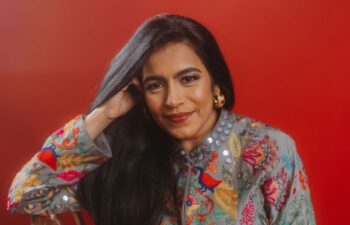
Falu is a Grammy award-winning, internationally recognized vocalist, composer, and educator known for her ability to seamlessly blend a signature modern inventive style with a formidable Indian classically shaped vocal talent. Falu’s career in the United States has led to a series of collaborations with Yo-Yo Ma, Wyclef Jean, Philip Glass, Ricky Martin, Blues Traveler, and A. R. Rahman, among others. She was appointed Carnegie Hall’s ambassador of Indian Music in 2006, and her shows at Zankel Hall have consistently sold out. Falu’s highlight performances include the 2022 GRAMMY Awards Premiere Ceremony and former President Obama and First Lady Michelle Obama’s White House State Dinner. During Diwali in 2022, the Mayor of New York City Eric Adams awarded her a citation for successfully representing immigrants in the city. Later that year she received a proclamation by the NYC Council “for fostering greater harmony around the world.”
Described by the New York Times as “East and West, ancient and modern” and named one of the twenty most influential global Indian women by the Economic Times, Falu continues to record and perform globally, and she serves as the Board of Governor for the Recording Academy’s New York Chapter.
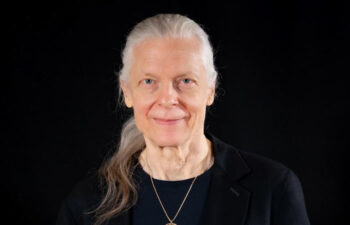
The Visionary paintings of Alex Grey articulate realms of psychedelic mystical experience, revealing interwoven energies of body and soul, love and spirit, that illuminate the anatomical core of each being. Alex’s artworks on the nature of life and consciousness have reached millions through his five books, including three monographs, as well as the exhibition and extensive reproduction of his artwork, social media, live-painting, and speaking appearances including a popular TED talk, plus his stage sets, animation, and Grammy award-winning album art for the rock band Tool. Alex and his creative and life partner, Allyson Grey, founded the Chapel of Sacred Mirrors (CoSM) as a heart center, sanctuary for Visionary Art, and sacred offering in the Hudson Valley town of Wappinger, New York.
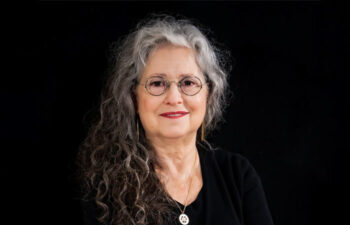
Allyson Grey is a painter and social sculptor. The subject of Allyson’s paintings is an essentialized world view, the artist’s interpretation of the realms of Chaos, Order, and Secret Writing. Chaos represents the material world; Order, the interconnected realm of energy and light; and Secret Writing, the untranslatable language of creative expression. Allyson has been the creative and life partner of artist Alex Grey since meeting in art school in 1975. She has long been an art educator, organization developer, editor, and muse to artists worldwide. She has an MFA from Tufts University. The Greys founded the CoSM (Chapel of Sacred Mirrors) as a heart center, sanctuary for Visionary Art, and sacred offering in the Hudson Valley town of Wappinger, New York.
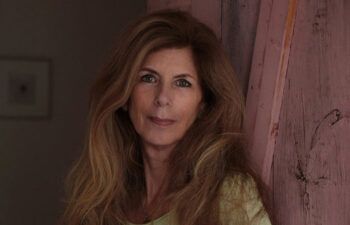
Marie Howe is the author of four volumes of poetry: Magdalene: Poems (2017), The Kingdom of Ordinary Time (2009), What the Living Do (1997), and The Good Thief (1988). She is also the co-editor of a book of essays, In the Company of My Solitude: American Writing from the AIDS Pandemic (1994). From 2012 to 2014, she served as the Poet Laureate of New York State. She is the poet in residence at the Cathedral Church of St. John the Divine and a chancellor of the Academy of American Poets.
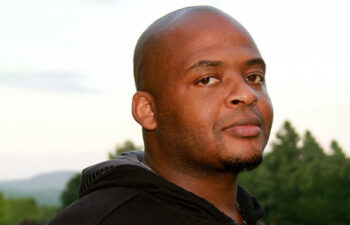
Born and raised in Jackson, Mississippi, Kiese Laymon is the Ottilie Schillig Professor in English and Creative Writing at the University of Mississippi and author of the novel Long Division, the memoir Heavy, and the essay collection How to Slowly Kill Yourself and Others in America. He was recently named a 2022 MacArthur Fellow.

Chella Man is an internationally acclaimed artist whose work explores the continuum of identity by deconstructing binaries within and beyond disability, gender, race, sexuality, and morality. His expansive identities as a Deaf, Genderqueer, Trans-Masculine, Jewish, and Chinese artist inform a unique perspective that cannot be limited to one medium. Most recently, he curated a New York Times–featured show highlighting 14 disabled artists under the title Pure Joy at 1969 Gallery. He is the author of Continuum (2021), director of the award-winning film The Beauty of Being Deaf (2021), executive producer of Trans in Trumpland (2021), fashion designer for his collection with Opening Ceremony (2019), actor in the role of Jericho in Titans of DC Universe (2019), and former columnist for Them, Condé Nast’s first LGBTQ+ publication (2018). Man has also worked with institutions such as the Brooklyn Museum, Powerhouse Museum, Performance Space New York, Leslie-Lohman Museum of Art, and Abrons Arts Center.
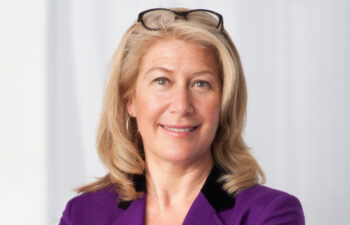
Dr. Lisa Miller is the New York Times bestselling author of The Spiritual Child and her new book, The Awakened Brain. Dr. Miller is a professor in the Clinical Psychology Program at Teachers College, Columbia University, where she founded the Spirituality Mind Body Institute, the first Ivy League graduate program and research institute in spirituality and psychology, and she has held over a decade of joint appointments in the Department of Psychiatry at Columbia University Medical School. Her innovative research has been published in more than 150 peer-reviewed articles in leading journals, including Cerebral Cortex, The American Journal of Psychiatry, and Journal of the American Academy of Child and Adolescent Psychiatry. Dr. Miller speaks extensively nationally and internationally on the science of spirituality in mental health and thriving.
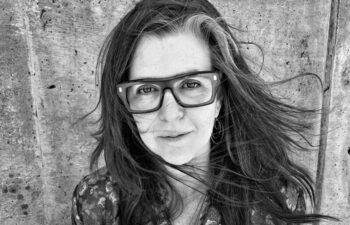
Nigel Poor is a visual artist whose work explores the various ways people make a mark and leave behind evidence of their existence. Her work has been exhibited nationally and internationally and can be found in various museum collections including SFMOMA, de Young Museum, and Corcoran Gallery of Art. She is also a professor of photography at California State University, Sacramento. In 2011 Poor got involved with San Quentin State Prison as a volunteer teacher for Mount Tamalpais College (formerly the Prison University Project). She is the co-creator and co-host of the Pulitzer Prize–nominated prison-based podcast Ear Hustle and the co-author of This Is Ear Hustle: Unflinching Stories of Everyday Prison Life.
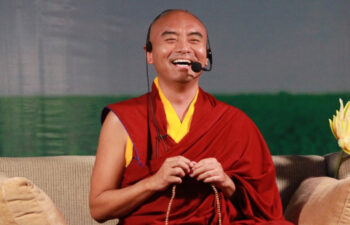
Yongey Mingyur Rinpoche is a recognized tulku of the Kagyu and Nyingma lineages of Tibetan Buddhism, a teacher, spiritual leader, and bestselling author. He possesses the rare ability to present the ancient wisdom of Tibet in a fresh, engaging manner. His profound yet accessible teachings and playful sense of humor have endeared him to students around the world. Rinpoche’s teachings weave together his own personal experiences with modern scientific research in relation to the practice of meditation. He has authored several books including two bestsellers: The Joy of Living: Unlocking the Secret and Science of Happiness, which has been translated into over 20 languages, and In Love with the World: A Monk’s Journey Through the Bardos of Living and Dying. His recent TED Talk is titled “How to Tap into Your Awareness—and Why Meditation Is Easier Than You Think.” Rinpoche teaches extensively around the world and oversees dharma centers, including three monasteries in Nepal, India, and Tibet, and the Tergar Institute in Kathmandu; Tergar meditation communities on six continents; numerous schools in Nepal; and social engagement projects related to health, hunger, hygiene, the environment, and women’s empowerment issues in the Himalayas.
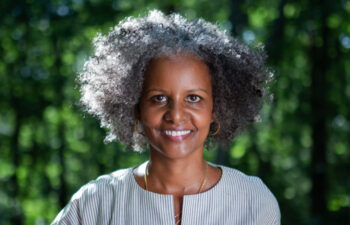
Sebene Selassie is a writer and teacher who guides people to trust the mystery and power of cosmic belonging. She offers courses, workshops, and retreats online and in person. She is trained as a meditation teacher, an integral coach, and as a practitioner of Indigenous Focusing Oriented Therapy. She is also a devoted student of mystic traditions including astrology. Selassie is a four-time survivor of Stage III and IV metastatic breast cancer. Her first book, You Belong: A Call for Connection, was published in 2020.
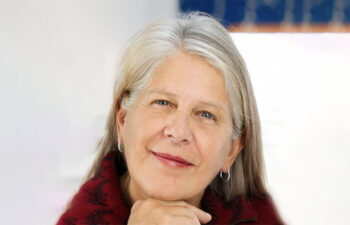
Dr. Jill Bolte Taylor is a Harvard-trained and published neuroscientist. At the age of 37 she experienced a severe stroke that wiped out the left hemisphere of her brain. She completely rebuilt her brain over the course of eight years. Her memoir, My Stroke of Insight, spent 63 weeks on the New York Times bestseller list, and her most recent book, Whole Brain Living, helps people find their own mental wellness. In 2008, Time magazine named her one of the 100 Most Influential People in the World, and she was the premier guest on Oprah’s Soul Series.
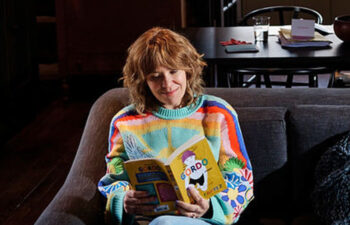
Michelle Tea is the author of countless books, including the Lambda Literary Award–winning Valencia and the PEN America award-winning Against Memoir. She has been awarded honors from The Rona Jaffe Foundation and the Guggenheim Foundation for her writing. As creator of Drag Queen Story Hour she has been honored with awards from the California Library Association and Logo Television. After curating imprints with City Lights Publisher and The Feminist Press, in 2023 Tea created DOPAMINE Books, an independent press.
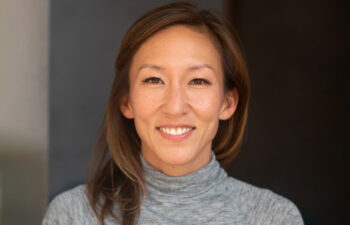
Dr. Kay Tye earned her bachelors from MIT, majoring in brain and cognitive sciences, and her PhD for thesis work with Patricia Janak at the University of California San Francisco, focusing on how the amygdala undergoes plasticity for reward learning. She did her postdoctoral training with Karl Deisseroth at Stanford University, where she pioneered the use of projection-specific optogenetic manipulations, a mainstay of circuit neuroscience, and used this approach to dissect anxiety circuits in the amygdala. She started her own lab at MIT in 2012, investigating the neural circuit mechanisms of emotional valence. In 2017 she won the NIH Director’s Pioneer Award to study social homeostasis, a conceptual framework she formalized in 2019. Dr. Tye moved her lab to the Salk Institute in 2019 and became Wylie Chair Professor of the Systems Neurobiology Laboratory. In 2021 she became a Howard Hughs Medical Investigator and continues to investigate the neural bases of emotional valence and social homeostasis on the circuit and systems level.

Spring Washam is a meditation teacher, author, and visionary leader based in Oakland. She is the author of A Fierce Heart: Finding Strength, Courage and Wisdom in Any Moment and her newest book, The Spirit of Harriet Tubman Awakening from the Underground. Washam is considered a pioneer in bringing mindfulness-based healing practices to diverse communities. She is one of the founding teachers at the East Bay Meditation Center. Washam received extensive training by Jack Kornfield, is a member of the teacher’s council at Spirit Rock Meditation Center in northern California, and has practiced and studied Buddhist philosophy in both the Theravada and Tibetan schools of Buddhism since 1999. In addition to being a teacher, she is a shamanic practitioner and has studied indigenous healing practices since 2008. She is the founder of Lotus Vine Journeys, an organization that blends indigenous healing practices with Buddhist wisdom in South America. Her writing and teachings have appeared in many online journals and publications such as Lion’s Roar, Tricycle, and Beliefnet. Washam has been a guest on many popular podcasts and radio shows. She currently travels and teaches meditation retreats, workshops and classes worldwide.
Get the latest news and stories from the Rubin, plus occasional information on how to support our work.